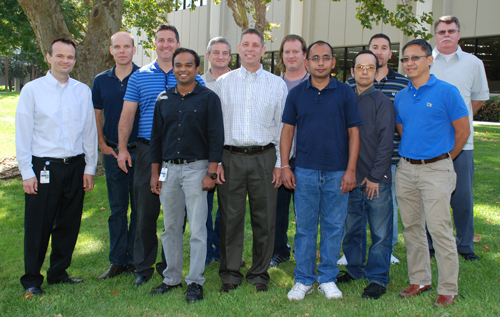In the third quarter of 2013, Texas Instruments introduced a type of converter that had never been seen in the marketplace before: the inductance-to-digital converter. Intended for sensing applications, the first model of this novel converter, the LDC1000, has opened new doors; in the words of one TIer, “These are some of the most exciting customer meetings we've ever had – they’re really fun discussions.”
We recently had the opportunity to speak with Jon Baldwin, TI’s product line manager for sensor signal path products, about how the LDC1000 came into existence. Here’s what he told us.
Electronic Products: How did the idea for the LDC1000 come about? Approximately when did it first happen and who were the people involved at the very beginning?
Jonathan Baldwin: The LDC core technology was developed for the industrial sensor market, to improve the performance of detecting the position of metal in factory floor applications. Our design team thought that there was an opportunity to develop a new core technology for data converters, replacing legacy analog-only solutions. It would provide increased flexibility and performance without requiring analog trimming techniques. And our marketing team saw an opportunity to apply this technology to a wide range of other markets, and worked with design, applications, and system engineering to develop a broad market data converter product. Hence the LDC1000 was conceived
EP: When was it decided to go ahead with this project? What was the critical factor in committing to the instrument’s development?
Baldwin: The LDC1000 development started in Q4 2012.The critical factor was overwhelming positive feedback on value proposition of inductive sensing as a solution to a wide array of existing sensor problems and as a way to enable new capabilities. The same team that defined the product worked to develop it (see photo).

TI’s LDC1000 development team (from left to right): Scott Kulchycki, George Reitsma, Jonathan Baldwin, Karthikeyan Venkatachalam, Michael Stout, John Dell, Dan D'Aquino, Sumant Bapat, Eugene Quan, Freddy Mendoza, Frederick Paclibon, and Dave Przbyla.
EP: What happened in getting the product from design to manufacturing? Were there changes in the design along the way? If so, why?
Baldwin: There were no changes in the core technology. We invested significant time in silicon verification and used a known process and package technology to take the risk out of the design. We utilized internal TI fab and packaging in Portland, ME, and Melaka, Malaysia. And so the entire design cycle, from concept to first shipment, was 10 months.
EP: What has the market acceptance been like, and what did you learn from the process?
Baldwin: Market acceptance has been overwhelmingly positive….Our customers want new solutions to their problems, not incrementally better versions of what they already have. We have several different product families in development. They’ll better leverage the value of inductive sensing in specific application segments that LDC1000, as a general purpose product, could not address.
Advertisement
Learn more about Texas Instruments





